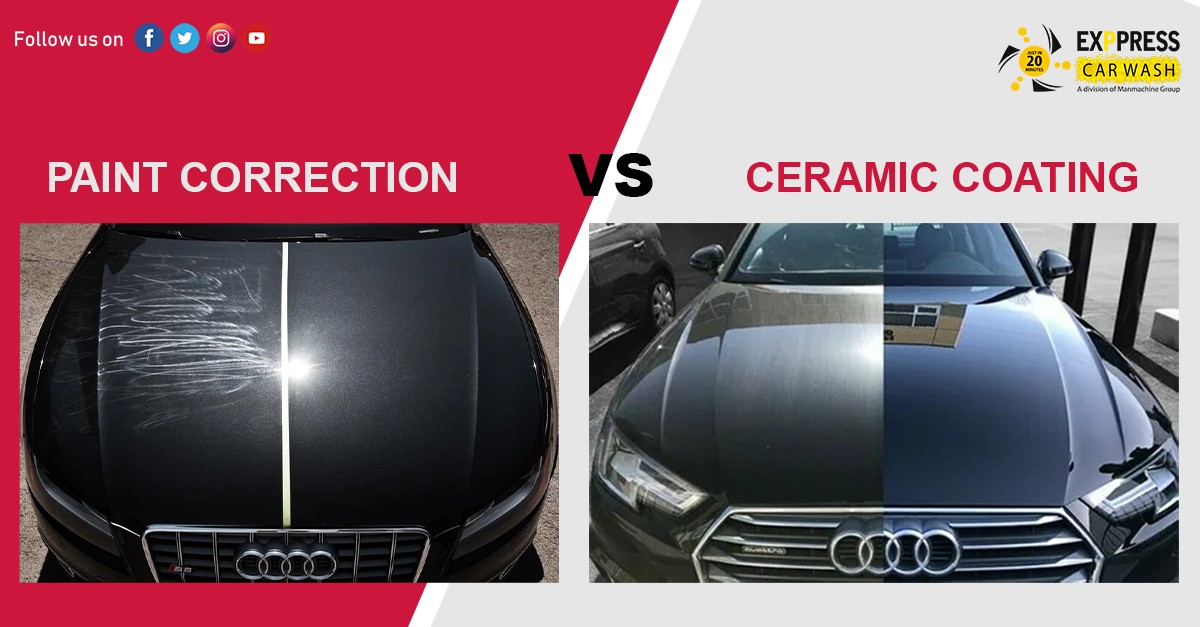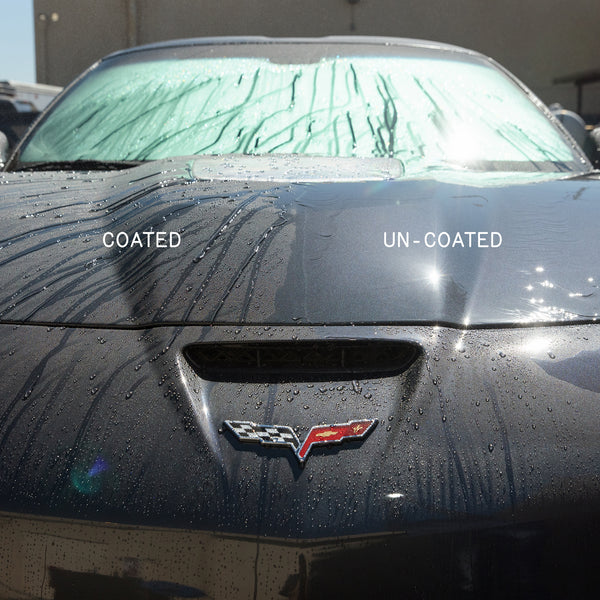Ceramic Coating: Shield Your Vehicle from Environmental Dangers with Ease
Ceramic Coating: Shield Your Vehicle from Environmental Dangers with Ease
Blog Article
Discovering the Science Behind Ceramic Finishing and Its Effect On Vehicle Explaining
The application of ceramic covering in cars and truck outlining represents a substantial improvement in automobile care, rooted in its advanced chemical residential properties, largely silica dioxide and titanium dioxide. As we discover the complexities of the application procedure and the lasting implications for automobile maintenance, it becomes clear that the choice of ceramic layer can fundamentally modify one's strategy to cars and truck treatment.
What Is Ceramic Coating?
Ceramic layer is a modern-day remedy that has actually gained popularity in the automotive outlining market for its capacity to give long-lasting defense for automobile surface areas. This innovative safety layer is generally composed of silica dioxide (SiO2), which develops a strong bond with the automobile's paint, producing a long lasting guard versus ecological impurities. Unlike conventional wax or sealers, ceramic coatings offer superior resistance to UV rays, chemical discolorations, and physical abrasions.
The application of ceramic finishing includes a meticulous process, where the car's surface area is extensively cleaned and decontaminated before the finish is applied (Ceramic Coating). As soon as treated, the layer boosts the automobile's gloss, depth, and clearness, offering a showroom-quality coating that lasts for many years. Among the key benefits of ceramic covering is its hydrophobic residential or commercial properties, which ward off water and dirt, making upkeep less complicated and reducing the frequency of washes
The Chemistry of Ceramic Finish
A fundamental element of ceramic layer exists in its chemical structure, mostly defined by the presence of silica dioxide (SiO2) This substance is important to the development of a durable, protective layer that bonds chemically to the car's surface area. When applied, the SiO2 molecules undertake a process called polymerization, wherein they develop a network of interconnected frameworks. This results in a durable, hydrophobic surface area that pushes back water and contaminants.
In addition to SiO2, several ceramic coverings incorporate titanium dioxide (TiO2) and other additives to improve their efficiency qualities. TiO2, for example, adds to raised hardness and chemical resistance. The interaction in between these substances creates a special molecular framework that provides a high level of protection against ecological variables such as UV rays, acid rain, and oxidation.
Additionally, the application procedure frequently involves a careful preparation of the surface to make sure optimum bond of the coating. This chemistry not only makes certain a durable surface however also enhances the aesthetic appeal of the automobile. Understanding the complex chemistry behind ceramic finishings is essential for describing experts who intend to supply remarkable protection and durability for their customers' vehicles.
Benefits of Ceramic Coating
While detailing experts frequently highlight the benefits of ceramic coatings, their benefits extend much beyond appearances. Ceramic coatings develop a hydrophobic surface area that drives away water, dust, and gunk, considerably reducing the regularity of washes and the effort required to keep a lorry's look.
In addition, ceramic finishings enhance the longevity of the car's coating. Unlike conventional waxes or sealers, which may last a couple of months, ceramic layers can withstand for years, offering a long-lasting service for vehicle treatment. This durability equates to set you back savings, as proprietors are much less most likely to require constant reapplication.
Furthermore, ceramic finishings are immune to chemical discolorations and etching, which can occur from acidic materials like bird droppings or tree sap. This resistance not only maintains the lorry's visual appeals yet also reduces potential damage - Ceramic Coating. On the whole, the financial investment in ceramic finishing uses car owners a substantial return in terms of defense, ease of upkeep, and durable aesthetic appeal, making it an increasingly preferred choice in the world of vehicle detailing
Application Refine Clarified

When the surface is appropriately prepared, the ceramic layer can be applied. It is usually done in a regulated atmosphere, such as a garage or describing bay, to avoid contamination from dirt and debris. Using an applicator pad, the technician applies her response the finish in small sections, operating in a crosshatch pattern to make sure even insurance coverage. review It is important to follow the manufacturer's guidelines relating to application thickness and curing times.
After applying the finishing, the vehicle needs to be permitted to heal, which might take numerous hours to a number of days, depending upon the certain product made use of. Throughout this period, it is vital to keep the automobile away from wetness and impurities. Once healed, the ceramic finishing develops a strong bond with the paint, giving enhanced defense and a shiny surface. Proper application is necessary to take full advantage of the longevity and efficiency of the ceramic covering.

Long-term Influence On Car Treatment
The long-lasting influence of ceramic covering on vehicle care is considerable, as it basically changes exactly how proprietors maintain their cars. By producing a durable, hydrophobic layer on the lorry's surface area, ceramic finishes lessen the adherence of dirt, grime, and contaminants. This building decreases the frequency of washing needed, inevitably saving water and cleansing items.
Additionally, the UV security supplied by ceramic coatings assists to prevent oxidation and fading of the vehicle's paint, preserving its visual charm and resale worth with time - Ceramic Coating. This safety obstacle likewise minimizes the probability of scrapes and swirl marks, which are typical issues in traditional paint surfaces
Furthermore, ceramic coatings promote much easier maintenance, enabling proprietors to cleanse their cars with very little initiative. The smooth surface area makes it difficult for contaminants to bond, making it possible for less complex elimination during regular cleaning.
Over time, the investment in ceramic finishing may bring about cost financial savings in lorry treatment product or services. Generally, the sustaining advantages of ceramic coatings not only boost the appearance of cars yet additionally add to a much more reliable and sustainable approach to lorry upkeep.
Conclusion
To conclude, the application of ceramic coating represents a substantial advancement in car detailing, driven by its distinct chemical structure of silica dioxide and titanium dioxide. This technology not only improves the aesthetic appeal of lorries but also provides durable defense against environmental hazards and wear. The lasting benefits, including decreased maintenance frequency and enhanced durability, underscore the worth of ceramic finishes as a necessary investment for maintaining automobile appearance and stability with time.

Report this page